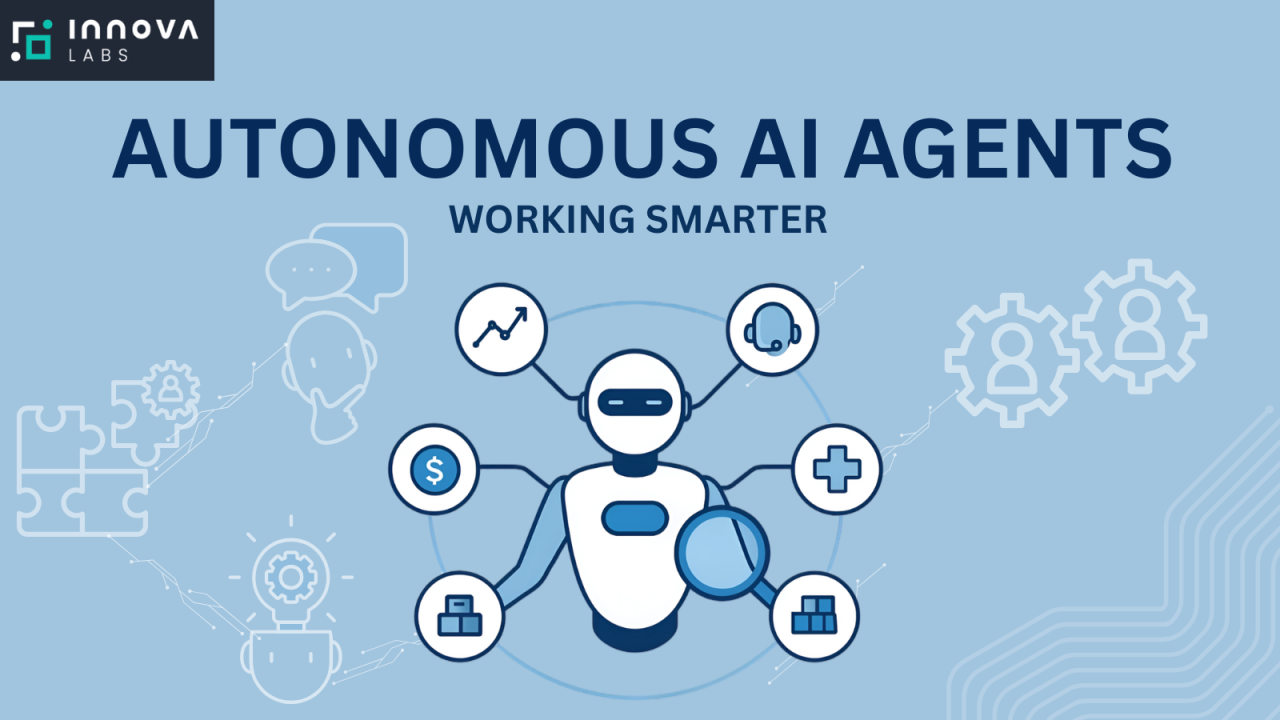Efficient Optical Computing: The Future of High-Speed, Low-Power Processing
Introduction
For decades, the computing industry has been powered by silicon-based transistors. Moore’s Law predicted the doubling of transistor density every two years, enabling exponential growth in processing power. However, this growth is now slowing due to fundamental physical and thermal limits of electronics. As traditional electronic processors approach their boundaries, researchers and tech companies are increasingly looking toward optical computing—using light instead of electrons to process and transmit information.
Efficient optical computing promises to overcome bottlenecks in speed, power consumption, and data transfer, enabling breakthroughs in artificial intelligence (AI), big data analytics, and scientific simulations. By leveraging photons, which travel at the speed of light and generate less heat compared to electrons, optical computing can open doors to an entirely new era of high-performance computing.
This article dives deep into the fundamentals, innovations, applications, and future of efficient optical computing.
What is Optical Computing?
Optical computing is the concept of performing computations using light (photons) rather than electricity (electrons). Instead of transistors and wires, optical computers use lasers, lenses, mirrors, and optical fibers to manipulate and transmit signals.
In essence:
-
Electronic computing: Information represented as 0s and 1s via voltage levels.
-
Optical computing: Information represented via light properties—such as intensity, phase, wavelength, or polarization.
Because light moves faster and can carry more information in parallel, optical systems have the potential to vastly outperform electronic circuits in certain domains.
Why Efficiency Matters in Optical Computing
Although optical computing is not entirely new, the focus today is on efficiency. High-performance computing, data centers, and AI training consume enormous amounts of energy. According to the International Energy Agency (IEA), data centers accounted for nearly 2% of global electricity consumption in 2023, a number expected to rise with the growth of AI.
Efficient optical computing aims to:
-
Reduce Power Consumption – Photons don’t generate resistive heating like electrons, reducing energy loss.
-
Increase Bandwidth – Multiple wavelengths of light can be multiplexed (WDM: Wavelength Division Multiplexing), allowing vast data throughput.
-
Enhance Parallelism – Light beams can carry and process many streams of information simultaneously.
-
Overcome Moore’s Law Limits – Optical devices can potentially process beyond transistor scaling limits.
Core Principles of Efficient Optical Computing
To understand how optical computing achieves efficiency, let’s look at its fundamental principles:
1. Photonic Interconnects
-
Replace traditional copper interconnects with optical waveguides.
-
Achieve much lower latency and higher data transfer rates.
-
Reduce heat buildup compared to electronic circuits.
2. Wavelength Division Multiplexing (WDM)
-
Multiple wavelengths (colors) of light carry different data streams through the same optical path.
-
Enables parallelism that is impossible with electrical signals.
3. Optical Transistors and Switches
-
Essential for logic operations.
-
Use materials like graphene, silicon photonics, or plasmonics to control light with light.
-
Still a challenge for scalability and stability.
4. Analog Optical Processing
-
Light naturally performs certain mathematical operations such as Fourier transforms, convolution, and matrix multiplication.
-
AI and deep learning workloads, which rely heavily on matrix multiplications, are prime candidates for optical acceleration.
5. Hybrid Systems
-
Most practical implementations today are hybrid optical-electronic architectures.
-
Optical components handle high-bandwidth and parallelizable workloads.
-
Electronics handle tasks requiring precision, memory, and programmability.
Current Technologies Driving Optical Computing
Efficient optical computing is being developed through several approaches and innovations:
1. Silicon Photonics
-
Integration of optical components on silicon chips.
-
Companies like Intel, IBM, and AMD are investing heavily in silicon photonics for data centers.
-
Already used in high-speed optical interconnects.
2. Photonic Neural Networks
-
Optical processors designed for AI workloads.
-
Perform matrix multiplications using light interference.
-
Companies like Lightmatter, Lightelligence, and Optalysis are pioneering photonic AI accelerators.
3. Optical Quantum Computing
-
Utilizes photons for quantum information processing.
-
Promises exponential speed-ups in certain algorithms.
-
Companies like Xanadu and PsiQuantum are leading research.
4. Nonlinear Optical Materials
-
Materials like graphene, perovskites, and metamaterials allow stronger light-matter interactions.
-
Enable switching, modulation, and signal amplification for computing tasks.
5. Optical Memory and Storage
-
Holographic data storage and phase-change optical memories.
-
Key to enabling all-optical systems that minimize reliance on electronics.
Applications of Efficient Optical Computing
Efficient optical computing has the potential to transform multiple industries:
1. Artificial Intelligence (AI) and Machine Learning
-
Training large AI models like GPT requires massive energy.
-
Optical processors perform matrix multiplications with much lower power.
-
Could accelerate AI by orders of magnitude.
2. Data Centers
-
Optical interconnects reduce bottlenecks in data transfer.
-
Lower cooling requirements and improve efficiency.
-
Enable greener hyperscale infrastructure.
3. Telecommunications
-
Already heavily reliant on optical fibers.
-
Optical processors could handle real-time packet routing and processing.
4. Scientific Research
-
Simulations in physics, chemistry, and genomics demand high-performance computing.
-
Optical accelerators can speed up time-sensitive discoveries.
5. Cryptography and Security
-
Optical random number generators and quantum encryption.
-
Improve security while reducing computational costs.
6. Edge and IoT Devices
-
Ultra-low-power optical chips could enable efficient AI inference on mobile devices and sensors.
Challenges in Achieving Efficiency
While promising, optical computing faces significant challenges:
-
Manufacturing Complexity – Building nanophotonic circuits is more complex than transistor fabrication.
-
Integration with Electronics – Most optical processors still rely on electronic memory and control circuits.
-
Scalability – Optical transistors are not yet miniaturized enough for dense integration.
-
Precision – Optical systems are naturally analog; achieving digital precision requires complex error correction.
-
Cost – Large-scale deployment requires affordable manufacturing and standardization.
Recent Breakthroughs in Efficient Optical Computing
Several notable advances in recent years are moving the field closer to practical use:
-
Lightmatter’s Envise chip: An optical AI accelerator capable of high-speed, low-power matrix multiplications.
-
MIT’s Optical Neural Networks: Experimental photonic processors performing image recognition tasks efficiently.
-
Xanadu’s Borealis: A photonic quantum computer with 216 squeezed-state qumodes.
-
Intel’s Silicon Photonics: Commercially available optical transceivers now used in data centers.
These developments show that the transition from research to commercialization is actively underway.
The Future of Efficient Optical Computing
Looking forward, efficient optical computing is likely to emerge not as a replacement for electronics, but as a complementary technology. Hybrid systems, where optical and electronic components work together, will dominate in the short to medium term.
-
2025–2030: Expansion of silicon photonics in data centers, optical accelerators for AI training.
-
2030–2040: Emergence of all-optical processors, scalable photonic neural networks, integration into mobile and edge devices.
-
Beyond 2040: Full optical computing architectures, potential merger with quantum optical computing, mainstream adoption across industries.
The ultimate goal is to create processors that are not only faster, but also greener and more sustainable. As the world faces increasing climate challenges, efficient optical computing could play a crucial role in building the next generation of eco-friendly computational infrastructure.
Conclusion
Efficient optical computing represents one of the most exciting frontiers in the evolution of technology. By harnessing the speed and parallelism of light, researchers and companies are working to overcome the limitations of electronics.
While challenges remain—such as scalability, cost, and integration—advances in silicon photonics, photonic AI accelerators, and optical memory are paving the way for real-world applications. From AI and data centers to telecommunications and quantum security, efficient optical computing promises to reshape how we think about processing information.
In the decades to come, it could prove to be the key enabler of not just faster computing, but also sustainable and energy-efficient digital transformation.
For quick updates, follow our whatsapp –https://whatsapp.com/channel/0029VbAabEC11ulGy0ZwRi3j
https://bitsofall.com/xais-massive-funding-elon-musk-ai-company/
https://bitsofall.com/https-yourblog-com-openai-nvidia-partnership-compute-backbone-ai/
Apple’s chip redesign — why the company is rethinking silicon
Meta FAIR Released Code World Model (CWM): A 32B Open-Weights LLM That Thinks About What Code Does







